A proof of concept in software development is an assessment of a product idea to determine its feasibility for success in a competitive market.
This concept can analyze the potential of a product idea and its risks of failure to create a foolproof plan that guarantees its success and growth after launch.
It helps identify any existing or potential risks associated with your software development life cycle.
You may determine the present and future of your product with an effective proof-of-concept business strategy.
For example, Wikipedia data states that developers design tech demos as proof of concept before actual game development.
Proper risk analysis and testing are required to confirm that the product performs well in the market whether it’s a software or food product.
POC in Software Development
It is a 2 to 3 months process to determine the feasibility of the software concept for practical use.
Here is a list of some aspects that are involved in the proof of concept checklist:
- Evaluate the goals and technical factors of software before its development.
- Present a futuristic evaluation of the software performance to clients.
- Choose a lucrative direction for your software development process.
- Verify the potential for success or failure of the software.
- Prevent the loss of money and time invested in a non-productive development process.
- Create a prototype software product for testing.
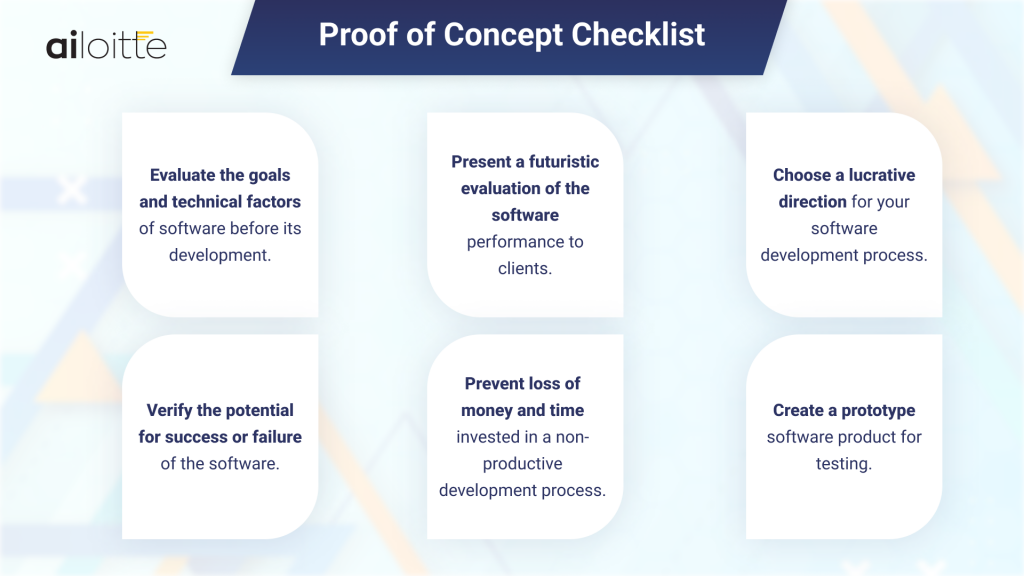
It is an organized program that determines the ability of your software to solve problems and help users.
And it simplifies the software development process, testing, improvements, and launch.
You can create a proof of concept design for software in various forms like a document, prototype, slideshow presentation, or even a minimum viable product if the budget supports it.
Recommended article for you – Build a Stock Trading Platform
Benefits of Proof of Concept
It provides extensive data to support your software’s potential for success and growth.
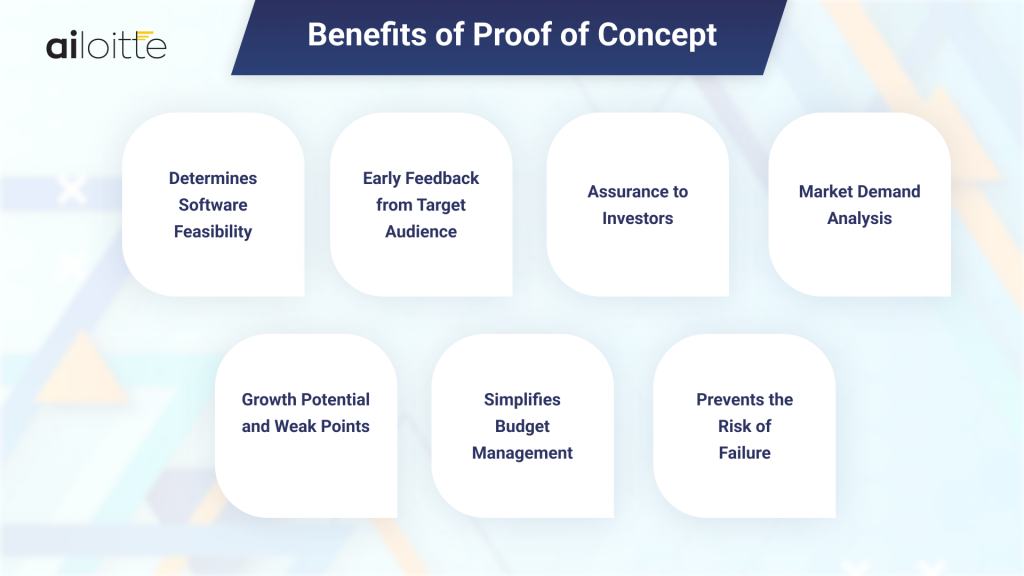
Determines Software Feasibility
The implementation of this process in software development determines its practicality in the market.
It also determines whether your budget supports the whole development process until it meets the required quality.
Such data helps choose the ideal technical direction for your software development project.
Early Feedback from Target Audience
Proof of concept process flow can also cover a concept explanation and testing session with the potential target audience.
It helps collect early feedback from the target audience.
The feedback that you can implement before the development begins and create a widely desired product.
Assurance to Investors
It can present the growth potential of your software to investors/ stakeholders with proven data.
And it can help you get new investors with ease.
Market Demand Analysis
POC in software development evaluates the market demand for your software concept.
- What problems does it solve?
- How many users will benefit from it?
- How can you do better than your competitors?
- How will you maintain the demand for your product in the market?
This analysis will produce the desired final result when you complete the development process.
Growth Potential and Weak Points
It identifies the potential of software like benefits, customer demand, and unique qualities.
And it also helps identify the limitations, risks, and disadvantages of the software product. The team can choose a better direction for the development process with such extensive data.
Simplifies Budget Management
Evaluating the risks, potential, and requirements helps narrow down a specific budget for the project. It protects you from unexpected or additional spending on development.
The POC analysis also ensures that the money spent on the development is not misspent on any of its aspects.
Prevents the Risk of Failure
Software development in the POC environment rules out all the significant risks associated with its process. And it helps the team choose a safer, more effective, and potentially successful direction.
For example, an expensive software development project could cause a fatal financial blow to investors and developers if the end results fail to meet expectations.
A POC analysis will prevent such possibilities even before the development begins.
Recommended article for you – Custom CRM Software Development
How to Create a Proof of Concept?
The IT industry proof of concept plan must include:
- Well-organized criteria for POC model success.
- The proof of concept documentation presents the whole process.
- Post-POC planning for software development.
- Involvement of investors, stakeholders, developers, and the rest of the team.
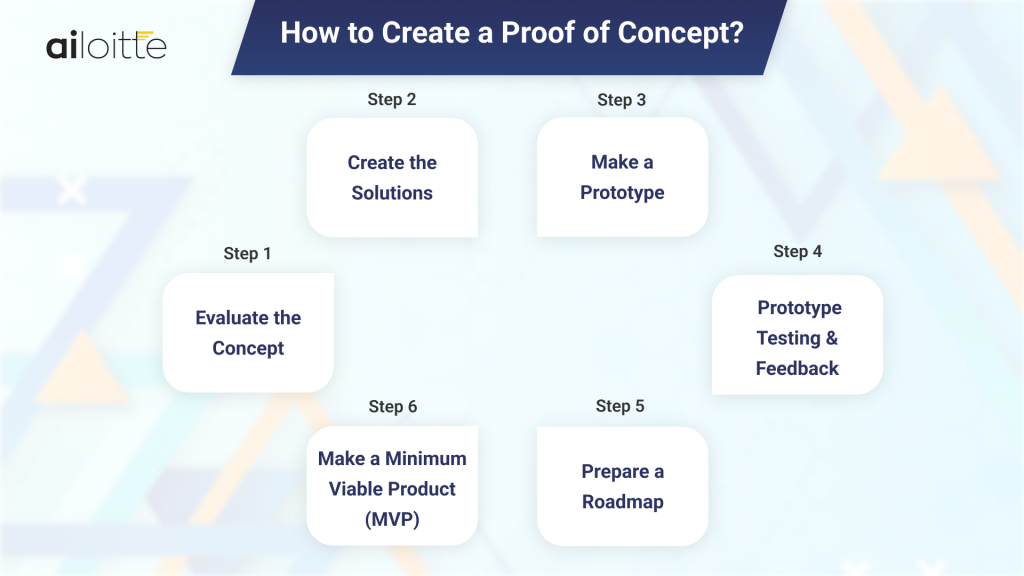
Step 1: Evaluate the Concept
The experts will determine the feasibility of your project during this stage.
It must provide a thorough explanation of how your product will solve problems and stand out.
You must create a list of goals to achieve with your POC process. List all customer pain points, requirements, and demands as well.
- Interview investors, stakeholders, and the target audience to discuss the product.
- Find out the functional or financial weak points of your software development process.
- Figure out the growth potential of your software in the market.
- Make a list of all the unique aspects of your software.
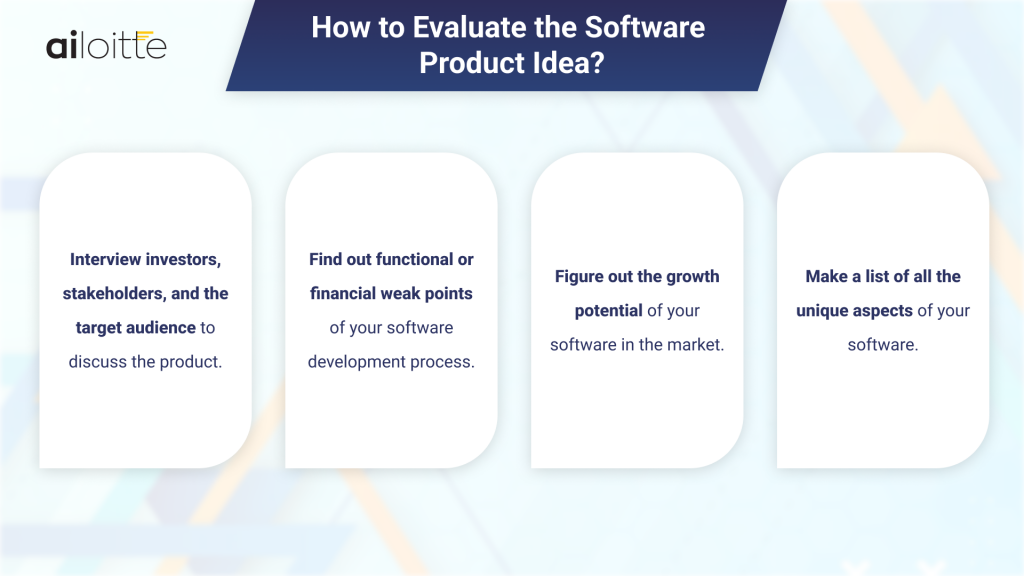
Answers questions like:
- Does your software provide something of value to the target audience?
- What resources do you have? And which can you acquire?
- What is the budget for the project? Is it economical?
- What is the timeframe of the project?
- What are your software’s competitive advantages?
- Who will be the top competitors of your software?
Answers to these questions will help you create a better POC analysis for your software project.
Step 2: Create the Solutions
In this stage, you must provide solutions for all problems you identify during the POC process.
- Create sustainable solutions for the weak points in your software project.
- Find an effective way to manage your project timeframe and budget.
- Compare similar products/services of your competitors to create a product that stands out.
- Present the solutions to investors/target audiences and get their feedback.
- Implement the feedback in the development process.
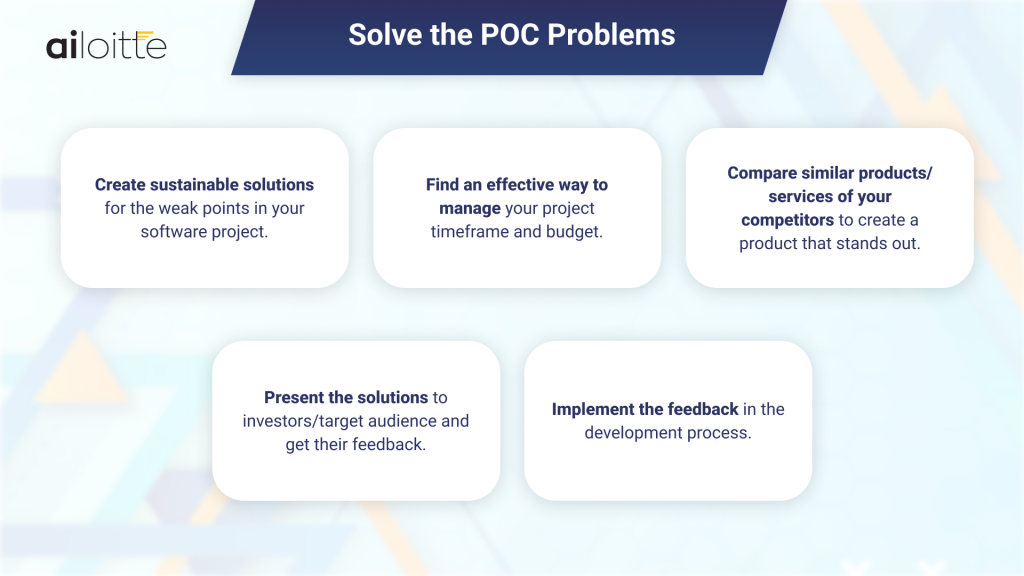
Step 3: Make a Prototype
You can present the results of your analysis with a basic prototype. This prototype could be a wireframe or mockup.
The prototype must represent the final features, UI/UX design, and basic functionality.
It will help confirm the results of the POC reports. And the team can then move forward with the actual development process.
Step 4: Prototype Testing & Feedback
Prototype testing shows how your product will perform and how the target audience perceives it.
It reveals the true potential of your software product to investors/stakeholders.
Here are some things you can achieve with prototype creation and testing:
- You can spot all the design and development problems.
- Get pre-development feedback from the target audience.
- Figure out the budget requirements of the project.
- Get a better understanding of product visualization and functionality.
- Capture the interest of investors and stakeholders.
- Get the prototype approved by the target audience before the development begins.
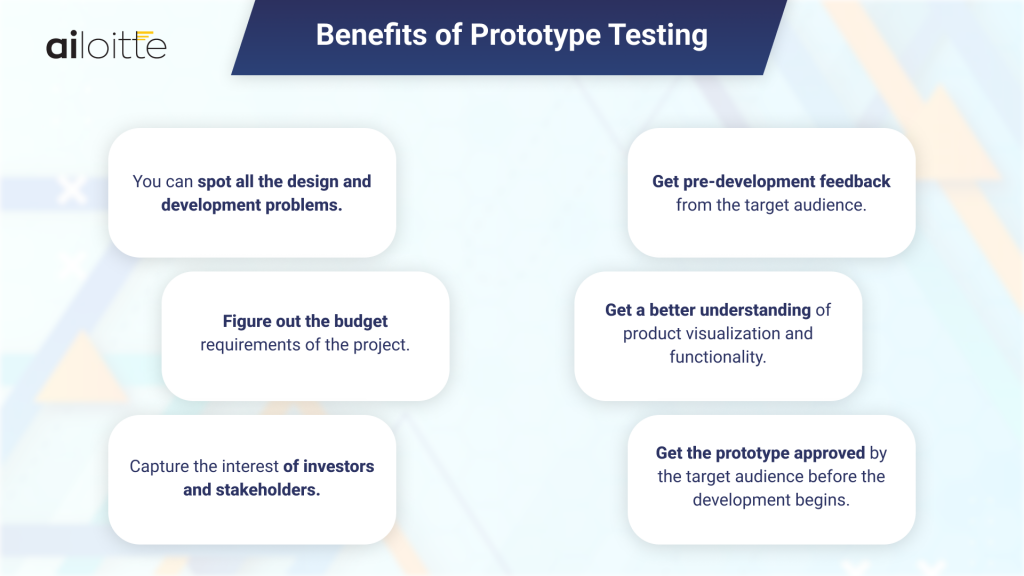
Testing will also reveal flaws/weak points missed during POC analysis.
You can keep implementing feedback and testing the product until your product lives up to the mark.
Step 5: Prepare a Roadmap
Categorize and present all the information you have collected through testing, prototype development, and feedback in a roadmap.
This roadmap should present the problems, solutions, feedback incorporation, and final execution guidelines for the software.
The roadmap will sell your pitch to hesitant investors and speed up the development process.
Step 6: Make a Minimum Viable Product (MVP)
MVP products have all the core features the user needs to use the software. It is more functional than a prototype and takes more time to develop.
Here are some things you can get from an MVP product:
- Understand the value of the product in the market.
- Start generating revenue from the customers.
- Figure out the advanced features required for the software.
- Verify the POC analysis and its roadmap.
- Make something impactful with only small capital.
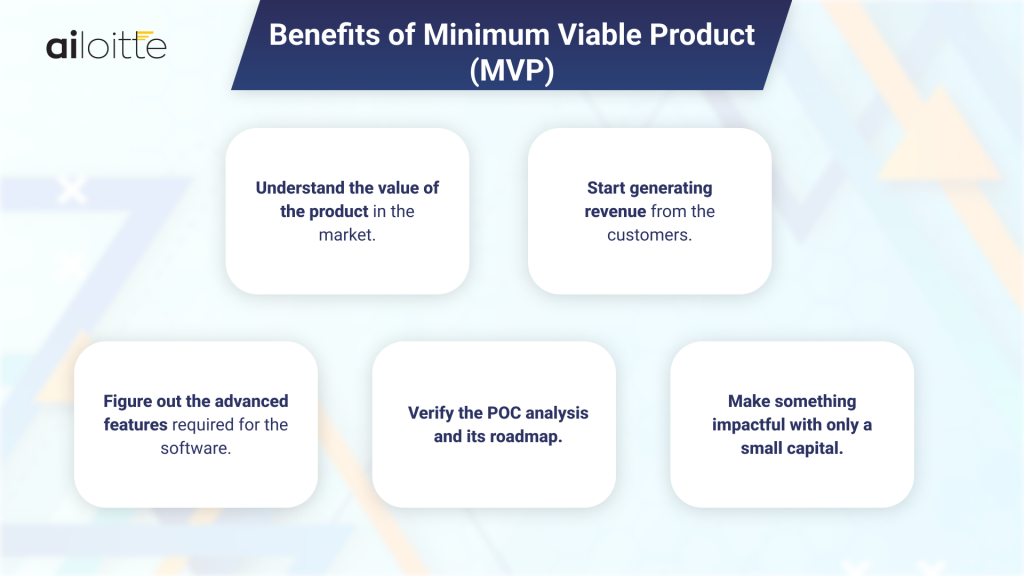
You can test the minimum viable product on a larger group than a few select target audiences. It helps you gather explanatory feedback about the product.
All you need to do is update it with advanced features when your MVP product is successful in the market.
Recommended article for you – Raise Money for a Mobile App Startup
Conclusion
Proof of concept in software development helps determine the viability and feasibility of your product. It can identify and deal with various technical and logistical problems with your development process.
It also provides a way to reduce financial and developmental risks associated with the product. And help investors and stakeholders realize the potential of your software product.
You get early feedback from the target audience with POC. This feedback leads your software development process in a fruitful direction.
For a successful POC integration, you can also get top-tier guidance and assistance from Ailoite. We are an all-in-one software/ mobile app development company capable of providing expert POC solutions.
Frequently Asked Questions
You can value it by creating a proof of concept analysis for your project with exceptional attention to detail and leaving no room for errors. Only then you will know the financial and developmental benefits of the POC analysis.
Proof of concept analysis helps verify the strong and weak points of your project before the development begins. It helps prevent unnecessary spending, lack of investors/stakeholders, faulty products, and low-demand end products.
Experts design technical proof of concept for IT industry products. It helps you analyze your software product from every angle with feedback from investors, stakeholders, and the target audience.
It also involves a roadmap where you gather all the collected POC data and choose the right direction for the software development process.
Prototypes, minimum viable products, and roadmap come after a proper POC analysis.
1. Prototypes to demonstrate the first and basic iteration of the final product.
2. A roadmap to determine the best direction for further development.
3. Minimal viable product to launch the software, generate revenue, get feedback, and implement the feedback.
4. Develop the advanced version of the software once the MVP product is successful.


















.png)
.png)
.png)



Leave a Comment